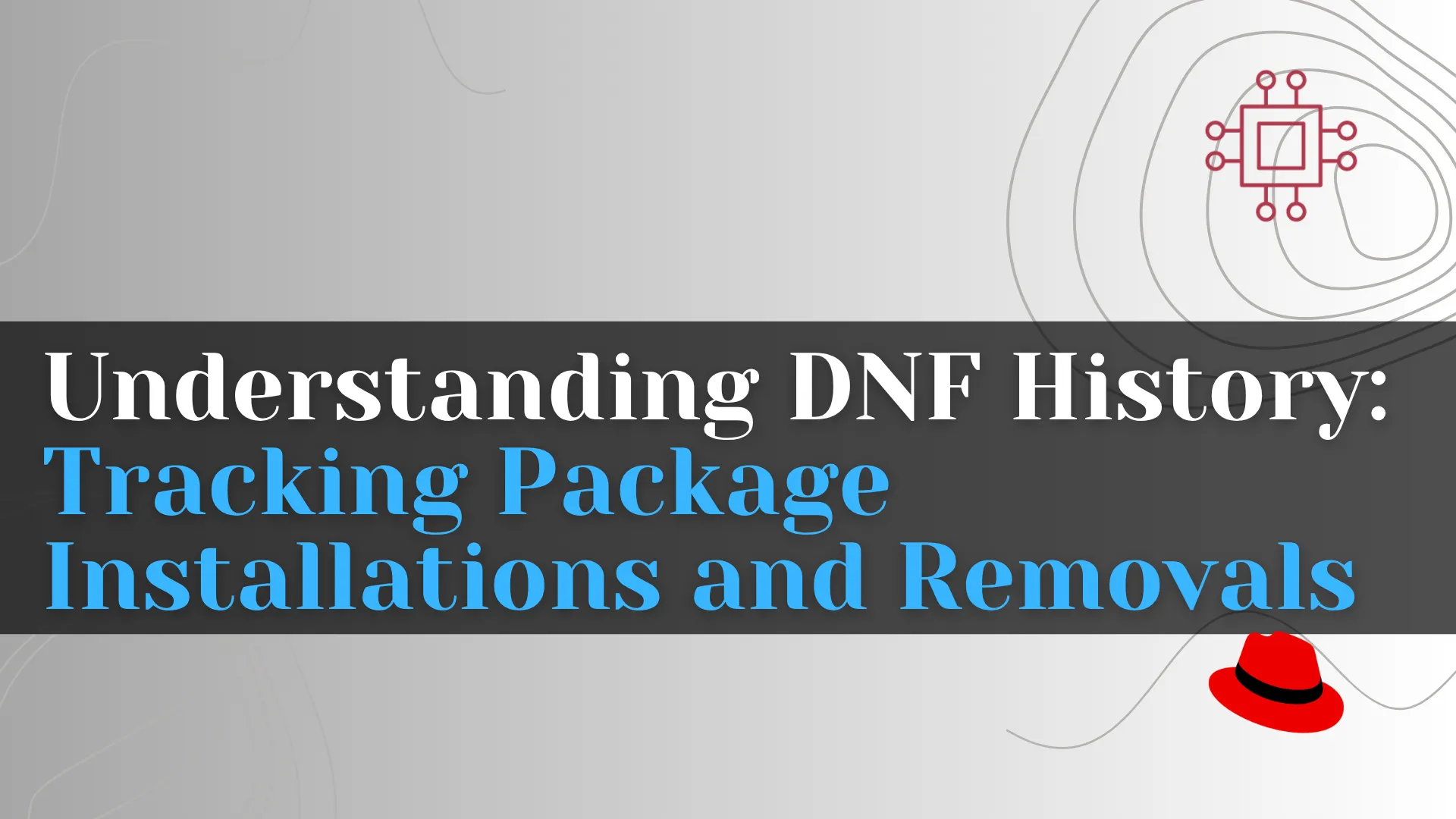
Table of Contents Introduction According to the Linux manual pages (man yum), there are 35 standard YUM commands. That number increases to the hundreds when

Learn how to install and enable the EPEL repository on RHEL 10 or CentOS 10 step-by-step, with CLI commands, troubleshooting tips, and best practices.
Installing the Extra Packages for Enterprise Linux (EPEL) repository on RHEL 10 or CentOS 10 unlocks a vast collection of high-quality, community-maintained open-source packages that are not included in the default repositories. Whether you’re managing a server or preparing a development environment, enabling EPEL ensures access to tools such as htop, nmap, ansible, nginx, and more.
This guide walks you through the process of installing and enabling EPEL on RHEL 10 / CentOS 10 using clean, secure, and supported methods. It includes:
|
|
|
By the end, you’ll be able to install EPEL securely and confidently manage packages from this essential community repository.
EPEL provides:
| Benefit | Description |
|---|---|
| Expanded Package Ecosystem | Access to many useful packages not available in base RHEL/CentOS repos |
| High-quality, Stable Builds | Maintained by Fedora/EPEL community, matching RHEL’s packaging standards |
| Security and Support | Packages follow enterprise-grade patching and release practices |
| Compatibility and Stability | Designed to work seamlessly with RHEL’s package ecosystem |
Installing EPEL becomes a standard best practice for system admins and developers who rely on Linux tools beyond those included by default.
dnf to Install EPEL (Recommended)🔄 Step-by-Step CLI Example |
For RHEL 10 or CentOS 10, dnf is the default package manager.
# 1. Ensure your system is up to date
sudo dnf update -y
# 2. Install EPEL release package on CentOS 10
sudo dnf install -y epel-release
# 3. Enable the EPEL repository on CentOS 10 (in case it's not enabled by default)
sudo dnf config-manager --set-enabled epel
# 4. Install EPEL release package on RHEL 10
sudo dnf install https://dl.fedoraproject.org/pub/epel/epel-release-latest-$(rpm -E %rhel).noarch.rpm
# 4. Verify the EPEL repository is available
sudo dnf repolist
# 5. Install an example package from EPEL, e.g., htop
sudo dnf install -y htop
# 6. Confirm installation
htop --version
If epel-release is not available or network restrictions apply, you can manually download and install the RPM.
# 1. Download epel-release RPM
wget https://dl.fedoraproject.org/pub/epel/epel-release-latest-10.noarch.rpm
# 2. Install RPM
sudo dnf install -y epel-release-latest-10.noarch.rpm
# 3. Clean metadata
sudo dnf clean all
# 4. Update repo metadata
sudo dnf makecache
# 5. Install a sample package
sudo dnf install -y nmap
# 6. Confirm installation
nmap --version
| Method | Pros | Cons |
|---|---|---|
dnf install epel-release | Fast, simple, ensures correct version installed | Requires network access to repos |
| Manual RPM download | Works in locked-down environments | Requires manual version check |
Once installed, it’s useful to know how to check and manage packages.
# 1. List all enabled repositories:
sudo dnf repolist
# 2. Search for available packages in EPEL:
sudo dnf search ansible --enablerepo=epel
# 3. Get info on a specific package:
sudo dnf info ansible --enablerepo=epel
# 4. Remove epel-release if needed:
sudo dnf remove -y epel-release
# 5. Prevent accidental updates from EPEL:
sudo dnf config-manager --set-disabled epel
🖥️ Sample Output & Verification |
Here’s how your key verification steps might look:
sudo dnf repolist
Updating Subscription Management repositories.
repo id repo name
epel Extra Packages for Enterprise Linux 10 - x86_64
rhel-10-for-x86_64-appstream-rpms Red Hat Enterprise Linux 10 for x86_64 - AppStream (RPMs)
rhel-10-for-x86_64-baseos-rpms Red Hat Enterprise Linux 10 for x86_64 - BaseOS (RPMs)
Install htop:
sudo dnf install htop
Updating Subscription Management repositories.
Extra Packages for Enterprise Linux 10 - x86_64 2.7 MB/s | 4.7 MB 00:01
Last metadata expiration check: 0:00:01 ago on Sat 30 Aug 2025 05:54:16 PM EDT.
Dependencies resolved.
===============================================================================================================================================================
Package Architecture Version Repository Size
===============================================================================================================================================================
Installing:
htop x86_64 3.3.0-5.el10_0 epel 196 k
Installing dependencies:
hwloc-libs x86_64 2.11.1-3.el10 rhel-10-for-x86_64-baseos-rpms 2.1 M
ocl-icd x86_64 2.3.2-8.el10 rhel-10-for-x86_64-baseos-rpms 69 k
Transaction Summary
===============================================================================================================================================================
Install 3 Packages
Total download size: 2.4 M
Installed size: 3.5 M
Is this ok [y/N]: Y
These outputs confirm that:
|
|
|
|
|
|
|
Installing the EPEL repository on RHEL 10 or CentOS 10 is a critical first step for unlocking a much broader range of open-source software on enterprise Linux systems. Whether you’re a system administrator deploying production services or a developer setting up a powerful local environment, EPEL provides secure, stable, and well-maintained packages that enhance the capabilities of your system without compromising reliability.
In this guide, you learned:
|
|
|
|
By following these steps, you ensure that your RHEL 10 or CentOS 10 system is ready for modern workloads and agile development needs. EPEL brings the flexibility of open-source to the rigid reliability of enterprise Linux — making it a must-have tool in your system administration toolkit.
Did you find this article helpful? Your feedback is invaluable to us! Feel free to share this post with those who may benefit, and let us know your thoughts in the comments section below.

Table of Contents Introduction According to the Linux manual pages (man yum), there are 35 standard YUM commands. That number increases to the hundreds when

In this article, we will guide you through the process of installing EPEL on various versions of RHEL and CentOS. Table of Contents 🔈Introduction The

Understanding dnf history for tracking, auditing, and undoing package installs and removals on Fedora/RHEL. CLI examples, tables, best practices included. Table of Contents 🔈Introduction In the
